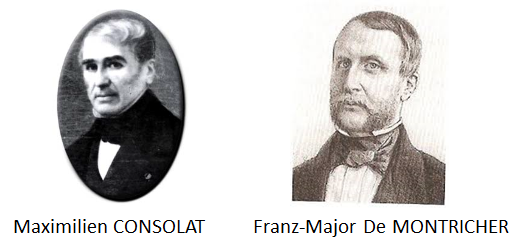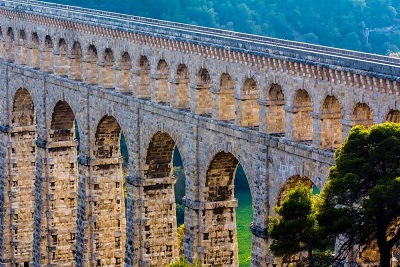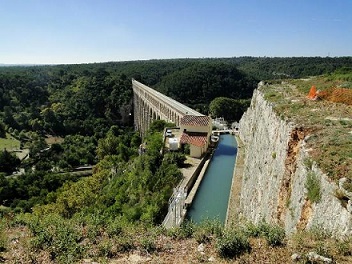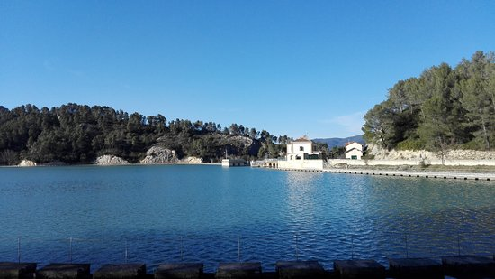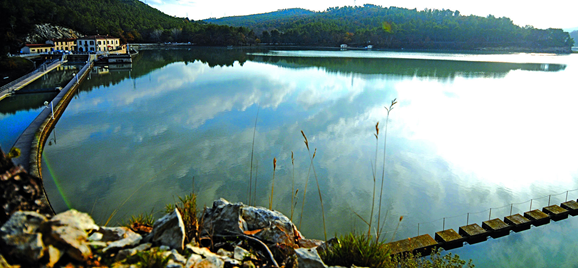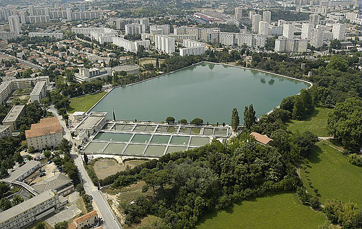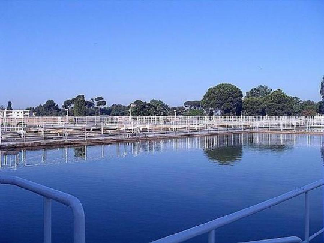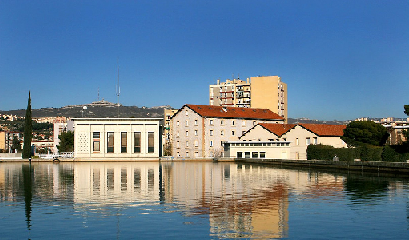
|
|
|
Social events > Technical visit
1834 was an annus horibilis for inhabitants of Marseille. After drought episodes during spring and summer of this year (flow of the river down to 1L per habitant and per day), heavy rains during several weeks in September led to extensive flooding, followed by cholera epidemic in which 865 people died. A second cholera epidemic occurred in July 1835, resulting in death of 2576 people. Maximin Consolat, mayor of Marseille from 1832 to 1843, decided thus in 1835 to improve water supply and health quality of water, "no matter what it costs". The decision was made to bring in water from the nearest large river, the Durance. However, the distance was substantial and the river was separated from Marseille by mountain chains (chaîne des Côtes, plateau de l'Arbois, massif de l'étoile). The plan called for water to be captured quite high on the Durance and thus harness gravity to overcome the mountainous terrain and arrive in Marseille at the highest point of the city, Saint-Antoine (150 metres (492 ft)). Hence allowing water service to the entire community. The building of the canal took 15 years, from 1839–1854 and covered 80 kilometres (50 mi) of which 17 kilometres (11 mi) were underground. The canal also traverses 18 bridges.
The technical visit will consist in following the path of water, from its pumping station in the Durance River to its arrival in Marseille.
This dam has been constructed from 1878 to 1882 and represents a water reserve of 20 hectares and of 2 million cubic meter. From its conception, it has a revolutionary process of decantation : the water arrives by the bottom of the bassin that is criss-crossed by a multitude of massive brickworks separated by jumpers. The level is kept rigorously constant by a system siphons-weirs, so that suspended solids are decanted and thus eliminated.
The treatment applied in this plant consists in i) coagulation/floculation with FeCl3, ii) decantation step and iii) disinfection with ozone and chlorine.
On 19St November 1849, water coming from Durance finally comes in the heart of Marseille. The highest civil, military and religious authorities of the City and 20,000 people are present to celebrate this day. 20 years later, to commemorate this event, a monument is raised in the honour of the advent of running waters : the Palais Longchamp, designed by Jacques-Henri Espérandieu (also at the origin of the Basilica Notre-Dame de la Garde), houses today the Musée des beaux-arts and Muséum d'histoire naturelle de Marseille. The surrounding Longchamp Park (Parc Longchamp) is listed by the French Ministry of Culture as one of the Notable Gardens.
|
| Online user: 1 | RSS Feed |

|
